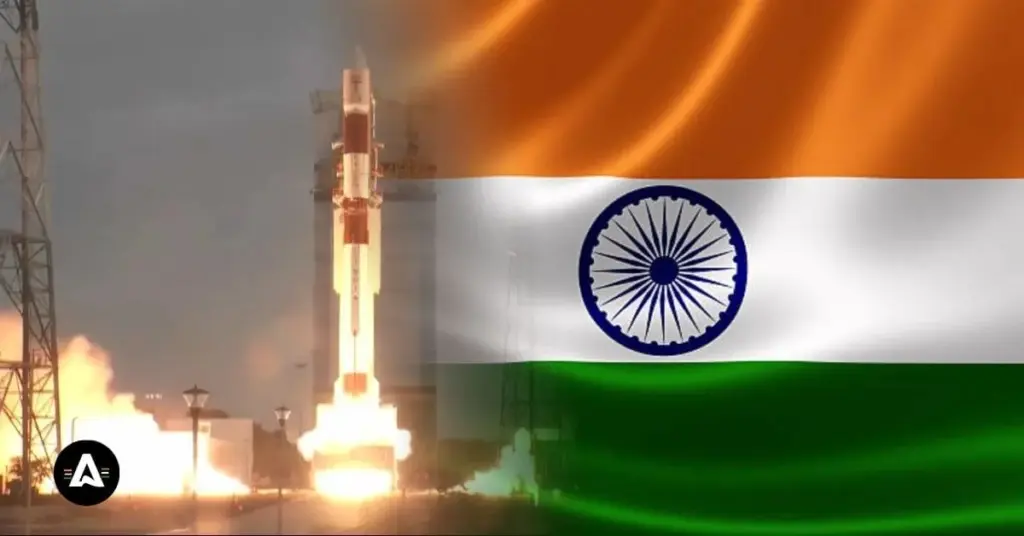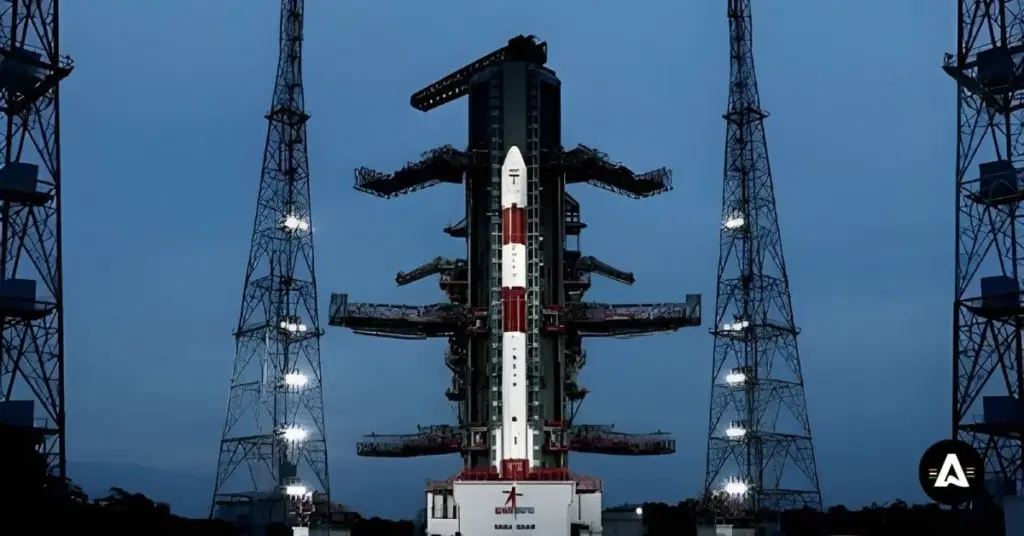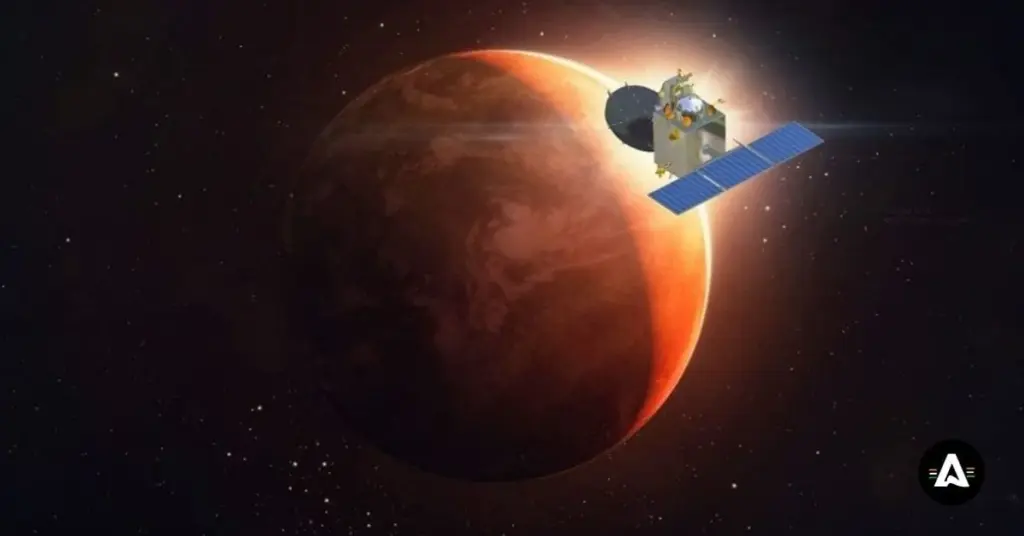Aditya L1 Mission: Pioneering Solar Research for India
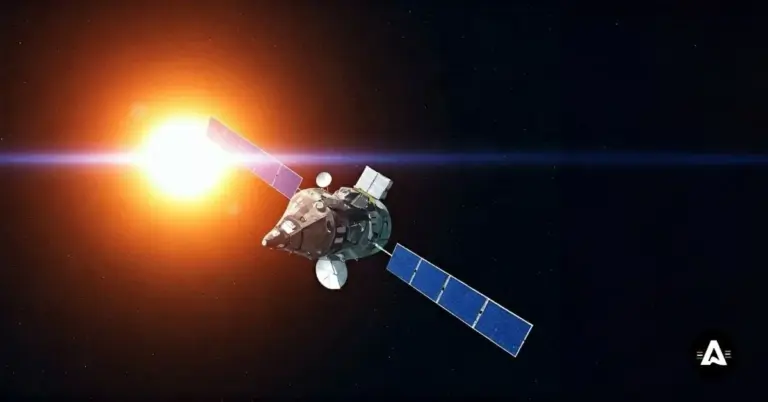
- Aditya L1 mission is the first time that India is taking a close look at the sun. This shows that India is open to the new and exciting things in space.
- The spacecraft is on the lagrange point 1 (L1), which is 1.5 million km from the earth. From this spot, it can see the sun all the time, with no stops from eclipses.
- The spacecraft has smart tools such as the visible emission line coronagraph (velc) and the solar ultraviolet imaging telescope (suit) that help it study the sun’s corona, the wind from the sun, and the air around it.
- The main goal is to let us know more about the sun’s actions, like when the sun throws out coronal mass, and what those big blasts do to the earth.
- The indian space research organisation (isro) is doing this project with help from others, like the esa. This lets India get together with the world to work on research in space.
- By looking at space weather as it happens, aditya L1 helps us know when strong sun storms, or geomagnetic storms, may come. This is really good for people, so we can keep power and internet safe when the sun is acting up.
Introduction
The Significance of Solar Research for India
Solar research helps us know more about the sun. The sun gives the Earth and all the planets in the solar system most of their energy. It is what makes life and the things we use possible. The sun also has a big effect on the technology people use every day. But, we still do not know everything about it. For example, some people ask how the corona of the sun gets so hot. Others wonder how the sun’s magnetic field acts or what makes the solar wind start. There is still more to find out about our sun.
In India, it is very important to think about these big questions. As the country uses more technology, it will need good ways to find out when space weather from the sun is coming. India can help the world know more about the sun and space weather. By doing this, it will join other countries that want better ways to watch space weather and keep their important systems safe.
Understanding the Sun’s Impact on Earth
The Sun is a big power source for all of us. The Sun guides the way Earth moves around it. It also helps to set Earth’s temperature. The Sun affects the magnetic field that is on our planet. The energy that comes from the Sun keeps life going here. It helps shape how things move in space. The Sun’s heat goes down into the core of the Earth. This heat helps with weather and climate. The Sun has a big impact on everyone.
Changes in solar activity, like solar flares, show up as bright auroras in the sky. But there is a lot more going on. These events can also change the Earth’s magnetic field. Because of this, we might have geomagnetic storms. These storms can mess up things like communication, GPS, and power grids.
It is important to know how solar flares and other solar activity travel through space and what they do to earth’s orbit. This helps us understand space weather. The Aditya mission watches the sun from the halo orbit. It gives us key facts. This helps us keep things safe that we use on earth and in space. It also helps tech and communication keep working all over the world.
India’s Growing Interest in Space Science
India has moved forward in space science in a big way. This shows that the country has a strong spot in this field. ISRO, the Indian Space Research Organisation, is the main space agency in India. It has done some hard space missions that people all over the world talk about. Some big things for the space agency are sending the Chandrayaan spacecraft to the Moon and the Mangalyaan spacecraft to Mars.
The Aditya L1 mission shows that India is making good progress in solar physics research. This helps put India at the front in solar observation. The solar observatory also works with other projects that focus on watching the Earth and using satellite communication. India already does well in these fields. Last year, ISRO got the chance to learn more about space and how things work in it because of these steps.
India has made big steps in space. The work on Mars, the Moon, and the sun shows that India is strong in space science. Every win in a new mission helps India get known in the world. Also, these space goals from isro get many young people in India to look at working in things like astronomy, the study of planets, and building things that go in space. The jobs done by isro do not just help us know more about the universe. They also help bring new ways and better tools to the country.
India has come a long way in exploring space. The country has seen many new things happen and has started some big projects. Now, India is ready to go for even bigger goals in the field of space.
Aditya L1 Mission Overview
L1 is the first solar observatory from India. The spacecraft is built by ISRO. It moves in a halo orbit at the Lagrange point called L1. This spot lets the spacecraft always look at the sun with no block in the way. The distance from Earth to Aditya L1 is about 1.5 million km, so it can watch the sun at all times.
The launch took place at the Satish Dhawan Space Center with the PSLV-C57. This is a big move for India in space. The Aditya spacecraft has seven key tools to study the sun. It looks at the sun’s outside parts and the space near it. These tools help us know more about the sun, the way it works, and the way it changes space weather. This mission gives us new information about the sun, space weather, and how they touch all of us on Earth.
What is the Aditya L1 mission and what are its main objectives?
Aditya L1 will soon help us learn new things about how the sun works. This project will also help India do better when it comes to working in space. The main goals for this aditya mission are:
- Find out why the solar wind goes so fast. See how large bursts of material, called coronal mass ejections (CMEs), get started and move out from the sun.
- Study the top parts of the sun, such as the photosphere, the chromosphere, and the corona.
- Watch for solar flares from the sun, and learn how they could change the things we use every day on Earth.
- Make space weather predictions much better and quicker. This can be done by watching the magnetic fields between planets.
The mission is here to look for old answers about how the sun’s energy moves. It brings people together from different countries. They work to learn more about the sun, space weather, solar flares, and solar wind. With Aditya L1, India now joins the other top countries who also want to find out more about the sun.
Key Milestones in Aditya L1 Mission Timeline
Aditya L1 mission did a lot after it was launched. It took about 126 days for it to reach the L1 halo orbit. The table below shows each step it took on this journey.
Milestones | Date | Description |
|---|---|---|
Launch | September 2, 2023 | PSLV-C57 placed Aditya L1 into the first orbit. |
First Orbit Raising | September 3, 2023 | The spacecraft got into an elliptical Earth orbit. |
Final Earth Manoeuvre | September 15, 2023 | The team got ready for the step to Lagrangian zone. |
Arrival at L1 | January 6, 2024 | Aditya L1 moved into the halo orbit at L1. |
These steps show how ISRO gave care to every part of the mission. The team helped guide the spacecraft with good timing and skill. From its launch in September, they moved it to its new path around L1.
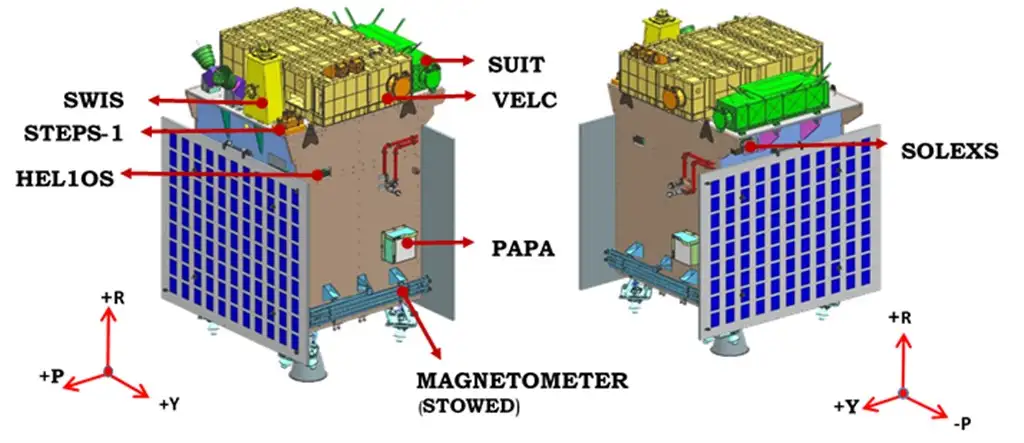
Scientific Payloads on Board
Aditya L1 has seven payloads. Each one is built to do a special job. ISRO made this mission so it can watch the sun from far away and look at the particles around it. Four of these payloads, like VELC and SUIT, are used to see the sun’s inside parts. These parts include the corona and the photosphere.
The other tools, such as PAPA and ASPEX, are used to check the magnetic fields and count the number of particles out in space. ISRO has these different tools on aditya so people can learn more about solar events. This work gives everyone more facts about the corona. It is good for all people around the world who study heliophysics.
Visible Emission Line Coronagraph (VELC)
The Visible Emission Line Coronagraph (VELC) is built to help us learn more about the sun. It helps us see the solar corona and the solar atmosphere while the Aditya L1 mission happens. This tool lets people watch the corona, which is the sun’s outer layer. With the VELC, scientists in India can look at things like solar flares and coronal mass ejections (CMEs) as they take place. Because the tool can block out extra sunlight, it is able to take clear pictures of the corona. This means we get to find new things about space weather that we did not know before. These findings help India become a leader and also change the way people across the world see the sun. Through Aditya, the work from VELC helps us know more about the space weather, the solar atmosphere, and the solar corona.
Solar Ultraviolet Imaging Telescope (SUIT)
The Solar Ultraviolet Imaging Telescope (SUIT) is an important part of the Aditya L1 mission. This tool is used to take sharp pictures of the solar atmosphere. SUIT mostly looks at the photosphere and the chromosphere, which are two parts of the sun. It works in the ultraviolet range and helps us see events on the sun, like solar flares or coronal mass ejections (CMEs). These actions are big factors in space weather.
With SUIT giving us current data, we can watch how these events on the sun can lead to solar storms. This helps people who study solar physics to know more about the sun and how it behaves. The tool shows the ways the sun, along with its flares and storms, can affect us here on Earth. With all this new data, we can make better models about space weather. This means people around the world can be better prepared if the sun sends strong events our way.
Plasma Analyser Package for Aditya (PAPA)
The Plasma Analyser Package for Aditya (PAPA) is another vital instrument on the Aditya L1 mission. Designed to measure the properties of charged particles in the solar wind, PAPA plays a crucial role in understanding how these particles interact with the Earth’s magnetic field. By analyzing these plasma particles, scientists can gather valuable insights into their velocity, density, and energy distribution.PAPA’s data complements the observations made by VELC and SUIT, creating a comprehensive picture of solar activity and its impact on space weather.
Journey to the Lagrange Point 1 (L1)
Reaching Lagrange Point 1 (L1) is a big step for Aditya L1 mission. The spacecraft, Aditya, will go about 1.5 million kilometers away from Earth to get there. On the way, it will feel many different gravitational forces. It has to move just right with these forces to reach and stay in a halo orbit at L1.
When Aditya gets to L1, it will have a clear and steady view of the sun. This spot is a good vantage point for watching the sun in real time. In this way, Aditya can see things like solar flares and coronal mass ejections when they happen.
The data it gets will help people know more about space weather. It will show how space weather changes things in the solar system and also in Earth’s air and sky.
Aditya can take live pictures of the sun from L1. This gives scientists new ways to look at the sun. They can see how the sun changes and how these changes can touch our planet. When they watch these things closely, they learn more about space weather. That way, they can get better at saying what could happen next. This can help keep power and communication lines safe here on Earth. The new Aditya mission shows us that people always want to find out more. It lets us see how far we can go in science and technology while looking at the universe.
Launch and Trajectory Details
The Aditya L1 Mission got off to a good start from the Satish Dhawan Space Centre. The mission used a strong launch vehicle to help the spacecraft reach the first halo orbit. Right after it took off, the spacecraft followed a clear path. There were some special manoeuvres that helped it move out of Earth’s way and go to Lagrange Point 1.
This place is called a vantage point. It is good for people who want to look at the sun and watch things as they happen. Here, the team can see the sun and learn about solar activity. They can watch things like solar flares and other space weather, like coronal mass ejections. With this, they can find out more about these events while they happen. The halo orbit helps the spacecraft stay right where it needs to be. This lets the team collect good information about the sun and space weather for all of us.
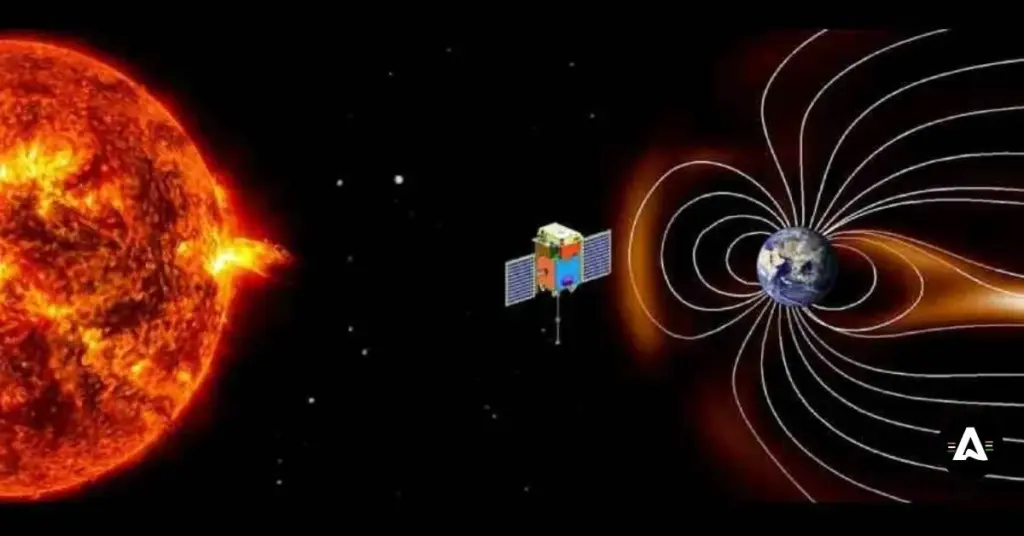
Importance of the L1 Orbit for Solar Observation
The L1 orbit is a handy place to always watch the sun without any stop. It sits between the earth and the sun. At this spot, which is called the Lagrangian point, the pull from the earth and the sun balance each other. This makes it easy for a satellite to stay there and keep checking the sun. The Aditya L1 mission uses this spot as a good vantage point to keep a steady look at solar flares and changes in the solar atmosphere. By being at this place, the mission lets people see the sun in real-time and get new ideas about the solar system and the way solar activity has an effect on us who live on earth.
Getting data from the L1 orbit helps scientists find out new ways to look at space weather and make better guesses about when solar flares or other solar activity will happen. It shows us more about our place in the solar system and the way happenings on the sun can change daily life on earth. With Aditya there at L1, everyone moves a bit closer to knowing how to think about and deal with space weather.
India & ISRO’s Role in Global Solar Research
India is one of the top countries working on research about the sun. Along with other top space groups, India helps people see the sun in better ways. The Indian Space Research Organisation, or ISRO, does a lot of important work here. A great example of this is the Aditya L1 mission. This mission is there to watch the sun and help us know more about it. A strong focus on the sun moves solar physics ahead and puts India among the leaders in the world’s space weather research. When ISRO works together with NASA and ESA, both help each other. There is more sharing of ideas and what they find. This helps all of us understand the sun, solar activity, the solar system, and space weather even more.
Comparison with ESA & Other International Solar Missions
Aditya L1 mission is a key step for the Indian space agency. It stands next to big projects from NASA and the European Space Agency. NASA’s Parker Solar Probe and the European Space Agency’s Solar Orbiter try to learn more about the sun. They study what goes on inside the sun. But Aditya L1 does things in a different way. It looks at the sun from a special vantage point at L1. Each project, like Aditya L1 Mission, helps us get new facts about the sun.
The Parker Solar Probe gets close to the sun’s outer part to collect data. Aditya L1, on the other hand, stays at one place and watches the sun all the time. It keeps sending real-time details back to us on Earth. Both the probe and Aditya work together with each other. The teams from NASA and ESA help them as well. By working together, they help us know more about the sun. This team effort plays a big part in building our world’s knowledge about it.
The data we get from these missions helps us learn more about the sun. It can also help us predict space weather. This is useful because space weather can change the way satellites work. It can help keep astronauts safe. These missions also protect things like our signal systems on Earth. As people keep looking for new things to know about the sun, projects like Aditya L1 show why it is important for countries to work together on science that goes beyond our world.
Contributions to Space Science and Technology
This new mission is a big step for india in space science and technology. It lets us learn more about the sun by studying its active spots and things like solar flares. The mission also looks at solar mass ejections. These are big bursts from the sun that can change space weather. By doing this work, we find out how the sun affects us and can get ready for anything it might send our way.
The mission also tries new ways to see the sun from far away. That can help scientists do new research. Some of these ideas might be used in other important work later on.
India is joining hands with nasa and esa for this. When they all work together, india gets a bigger part in learning about the sun. It also helps with finding new things and sharing their skills. These joint efforts make people all over the world see how india is moving ahead in solar research.
Conclusion
The new facts from India’s solar observation mission are a big step for how we learn about the sun and space weather. As the Aditya mission keeps going, it helps us to know more about the sun. It also helps India be seen as strong in solar research around the world. This solar observation mission gives us new knowledge about solar flares and things like coronal mass ejections. It might help people get better at saying what kind of space weather we can expect. In the end, what we find from the Aditya mission could help all of us.
Frequently Asked Questions
Aditya L1 is special because it is always watching the sun. It has tools that help it see the corona and the solar wind very closely. Aditya is at the L1 point and this place lets it get data all the time, without any break. With Aditya, we can learn more about the sun, its corona, and the solar wind in ways that we could not do before.
Aditya L1 will give scientists in India new ways to learn about the sun that no one has seen before. This will make it better to know how space weather works for all of us. The Aditya mission will also help people in India work with scientists from other countries. Because of this, many young people in India may want to work as scientists in the future. What comes from this work will also help solar research everywhere. This will give all of us more to know about the sun and space weather from India.
The Aditya L1 mission had a lot of challenges. There were some big problems with the parts that had to be made. A lot of work was done to make sure the launch vehicle was ready and worked the right way. The teams all worked together and made sure everyone was on time. Some things went wrong that no one knew would happen. But the people working on aditya kept talking to each other when these things came up. They fixed problems as they happened. This is what helped aditya have a good launch.
Aditya L1 started to send data back to Earth about 120 days after it was launched. This gives the spacecraft time to settle in its orbit. The team can use this time to check and set up all the tools. These steps are needed so Aditya can get good readings from the sun for the research.
Students and people who do research can take part in the Aditya L1 mission in many ways. You can do internships, work on group projects, or join workshops that ISRO offers. When you use the open-source data from the Aditya L1 mission, it can help in your work. It can also let you add something new to solar research. The aditya project by isro is a great way for students and researchers to learn new things and get involved in space studies together.

